February 21, 2018
What better way to celebrate Benevity’s tenth birthday than to invite social impact and employee engagement leaders from the world’s most iconic brands to come together to talk big ideas and all things Goodness? As always, the energy and enthusiasm of our annual client conference, Goodness Matters, was overwhelming and had all of us walking away revved up and ready to up-level for maximum impact in 2018! 💥
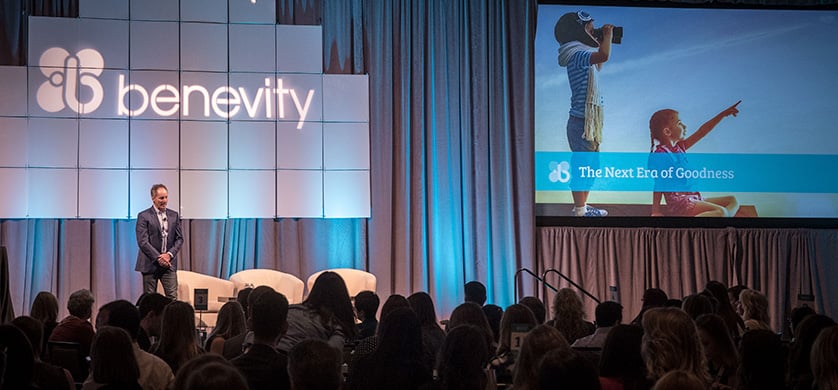 Benevity CEO Bryan de Lottinville welcomes attendees and unpacks the macro-trends informing our dynamic industry
Benevity CEO Bryan de Lottinville welcomes attendees and unpacks the macro-trends informing our dynamic industry
In case you were unable to join us in Palm Springs, or if you (like us!) can’t be in two places at once and had to choose between sessions, we took the big themes and pulled them together in this little recap for you.
The next era of Goodness
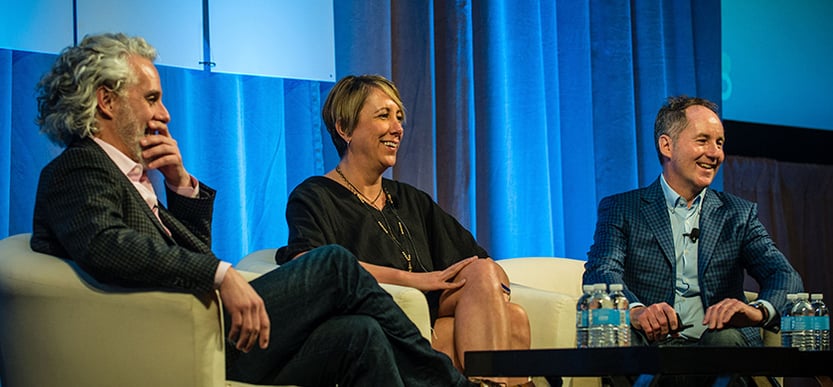
Chris Jarvis of Realized Worth, Carrie Varoquiers of Workday and Benevity's own Bryan de Lottinville talk the next era of Goodness
We kicked off #GM2018 by acknowledging that we’re living in a time when businesses—more than any other institution, including government and nonprofits—are expected to be the driving force for social change.
This macro-trend is what’s shepherding us into what we’re calling “the next era of Goodness.”
Today more than ever, companies are expected to create a better work experience and a better world. As Carrie Varoquiers of Workday put it, “the employee is at the center of the company and companies can no longer stay silent on matters that are important to society, or to their employees or a wide variety of stakeholders.”
This shift that Carrie calls out is why, in this new era of Goodness, companies must act in a way that represents society’s values if they want to attract, retain and engage an increasingly socially conscious workforce and consumer base.
Companies who are ahead of the curve are intentionally infusing purpose and meaning into their culture, deepening their relationships with their people, consumers and communities, and seeing better business and social outcomes.
“the employee is at the center of the company and companies can no longer stay silent on matters that are important to society, or to their employees or a wide variety of stakeholders.”
— Carrie Varoquiers, Workday
Perhaps BlackRock CEO Lawrence Fink summed it up best when he recently told the corporate world that if they want any of the $6 trillion in assets that BlackRock manages, they need to pursue more than just profit, they need to make a difference in the world.
When companies put purpose first, they have the power to unify their people in a culture of doing good, create more authentic bonds with their workforce and consumers, and truly differentiate themselves while progressing towards important social and environmental goals.
Purpose is no longer a nice-to-have, it’s a business imperative. As Chris Jarvis, Chief Strategy Officer of Realized Worth, pointed out during our panel discussion, the sort of social movement that we’re seeing and talking about can be counted on to create its own energy, allowing for exponential growth and impact.
But, let’s not get ahead of ourselves! As promised, here are five trends that you can count on to help you make Goodness matter (even) more as we enter this next era together!
1. Evolve from employee engagement to employee experience
Goodness Matters attendees share a local volunteering experience with the Mojave Desert Land Trust leading into the conference
Just as we saw corporate social responsibility (CSR) program goals shift from fundraising to employee engagement over the last decade, now we’re seeing the landscape change again.
Today’s employees expect that meaning and purpose will be front and center in their interactions with a brand, which is prompting companies to leverage their employee giving and volunteering programs in new and creative ways.
We heard from a few progressive companies about how they are embedding Goodness into their employee experience with things like new hire donation credits, open-choice year-round giving programs, skills-based volunteering opportunities, retiree engagement programs, and this year’s latest trend: employee-nominated grantmaking decisions.
We also heard quite a bit about companies taking a responsive approach to socio-political events and natural disasters by empowering employees to quickly respond through corporate giving opportunities or user-generated campaigns.
More companies are extending the opportunity for the public to get involved through public-facing versions of their relief campaigns.
Employee Experience (“EX”) has become a crucial pursuit in and of itself, with employee engagement touted as one of its greatest benefits.
More and more, companies are finding that when they infuse their culture and employee experience with an authentic approach to Goodness, they are able to truly differentiate their employer brands and heighten their ability to attract, retain and engage top-tier talent from hiring to retirement.
In light of this shift, we couldn’t be more excited that Forbes magazine has heralded 2018 as The Year of Employee Experience!
2. Unify people around the world with a global approach
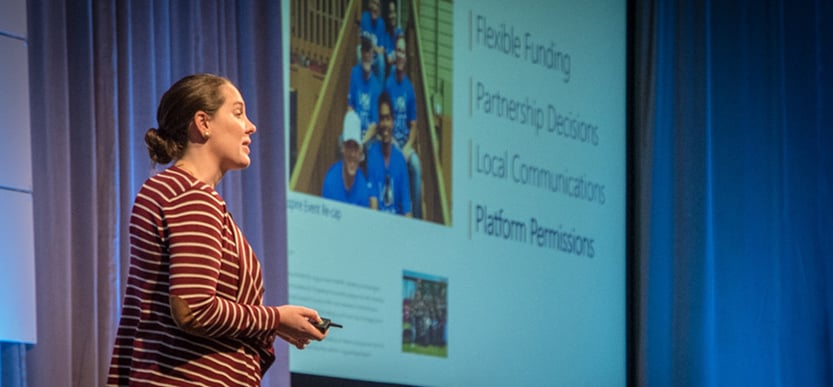
Kate Naszradi, Manager of Social Impact at Visa
2017 was a big year for supporting diverse and dispersed workforces, creating inclusive cultures and scaling Goodness globally. In fact, in the last year, we saw 91% more companies using our international solution, Benevity OneWorld™, to support their global workplace giving and volunteering programs.
It’s heartening to see so many companies embrace global Goodness as a means to unify their corporate culture and create a sense of connectedness for their internationally located workforces.
Visa’s people-powered global program is a shining example of this. Kate Naszradi, Manager, Social Impact at Visa, shared how they offer an equal program for all of their people that includes opportunities with a localized flavor.
Visa’s collective volunteering efforts span 79 offices with 100 local leaders supporting 349 organizations through more than 600 events, showing how passionate they really are about giving back to their communities in an authentic way.
Search #lifeatvisa for an insider’s look at Visa’s giving and volunteering program
3. Harness “the Power of And” by combining top-down and grassroots initiatives
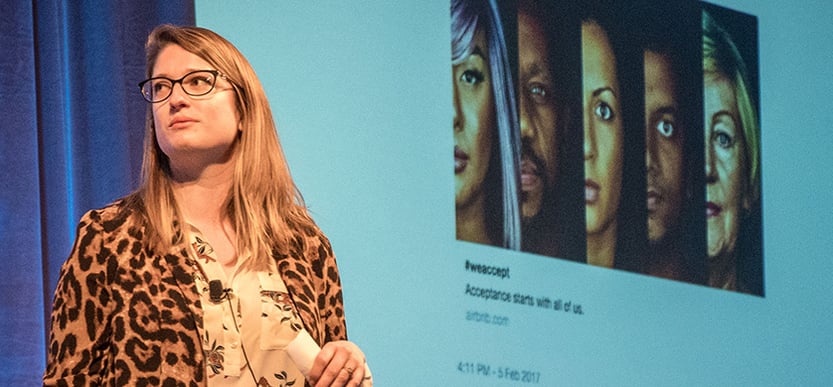
Rachel Katz, Global Volunteer Engagement Program Manager at Airbnb
Companies who harness what we call “the Power of And” see the most positive outcomes for their corporate culture and their communities.
This powerful concept takes us beyond an “either/or” approach to Goodness, and instead combines top-down and grassroots efforts to support causes that both the people and the company care about.
As the world is increasingly driven by the power of the crowd, companies must strike a balance between promoting their cause pillars and enabling their people to support the causes that matter most to them on a personal level with a variety of opportunities and choice.
Airbnb is a great example of “the Power of And”, blending unique ways for their people across the globe to engage in their cause pillars around homelessness, refugee support and providing shelter during disaster response.
Rachel Katz, Global Volunteer Engagement Program Manager at Airbnb, discussed how they’ve used their Goodness program to create a culture of generosity and gratitude that has supported the company’s mission to create a world where everyone can belong, while helping employees feel like they belong too.
At the launch of their Be Generous program, 86% of Airbnb employees participated, with 15% supporting company pillars specifically, showing how necessary “the Power of And” is in growing participation and engaging your people authentically.
4. Use data and analytics for deeper insight and greater impact
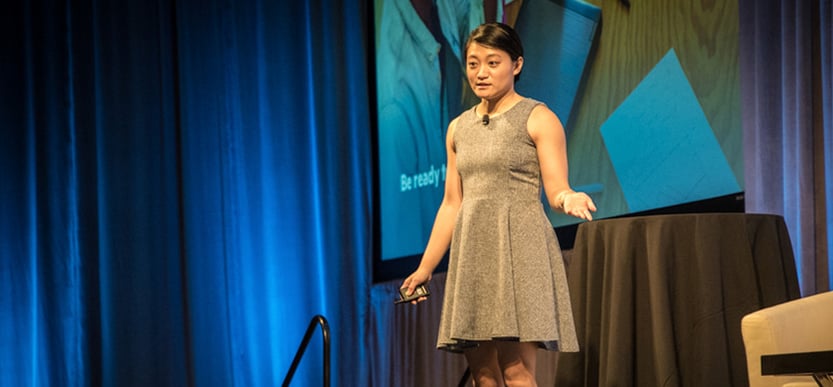
Kathy Gu, Program Director at Hewlett Packard Enterprise
Our data reveals the extent to which members of our client community are benefiting from integrating their giving, matching and volunteering programs.
With clients seeing a telling increase of over 100% in participation after such an integration, it’s no wonder why more companies than ever before are desiloing their programs for bigger impact.
In the past year in particular, we’ve heard some great stories about clients across all industries unlocking valuable insights through robust HR data and an advanced use of Benevity Reporting.
Pulling in data like location, department, level and title is fast becoming the norm, but many companies are taking their analysis even further. Looking at data points such as salary band, performance rating, tenure, age and/or education are allowing program leaders to identify behavior patterns that help them to optimize program elements to engage more people in their programs.
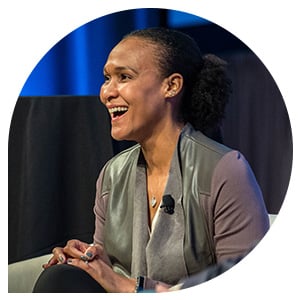
Spring Lacy, VP Corporate and Community
Engagement at Prudential Financial
Spring Lacy, VP Corporate and Community Engagement at Prudential Financial, discussed how they leverage data to increase engagement in an already successful program.
Since they provide Benevity with a detailed demographic file, they were able to identify lower participation rates with their middle management employees, and also pinpoint the sort of activities that were garnering their interest. Instead of simply targeting the “who” to fix this issue, they were able to dig into the “why” and began offering Volunteer Opportunities better suited to their interests and availability, helping to engage this important, but sometimes hard-to-reach, segment of employees.
We’re also hearing about how more companies are using their people and their data to inform (and integrate) their grantmaking programs.
Kathy Gu, Program Director at Hewlett Packard Enterprise, shared how they welcomed more than 250 employee nominations that led to 20 corporate grants to 15 organizations (seven of whom were outside of the United States). To assess these nominations, HPE dug into their giving and volunteering data to verify where their people’s passions already lay and used it to inform their granting decisions.
They found that users who had nominated organizations, regardless of the outcome, became more engaged in the program, spurring more activity within their Goodness program and helping to keep their workforce engaged during a time in which the company was undergoing a lot of change.
All of this truly proving that the more you know, the more you grow!
5. Consider neuroscience and behavioral change
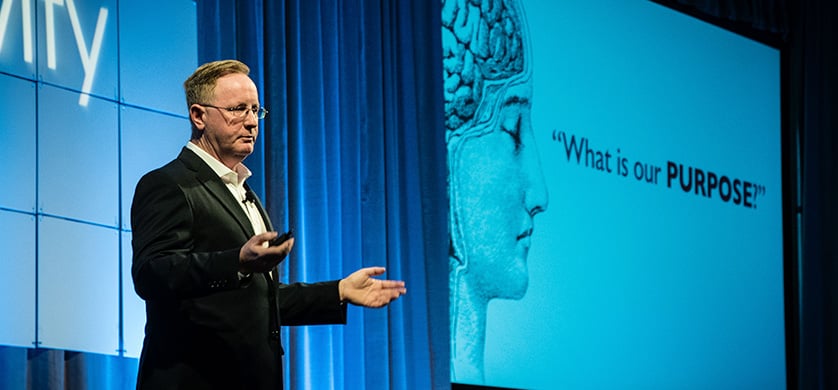
Russell Sparkman, co-founder and CEO of FusionSpark Media
We heard a lot about the brain and behavior this year. In his presentation, Russell Sparkman, co-founder and CEO of FusionSpark Media, shared how the hormone, or neurotransmitter, oxytocin contributes to social bonding, building trusting relationships and inspiring giving.
Activities that produce oxytocin like giving, volunteering, helping others and storytelling create the strong sense of connectedness that can be used to develop authentic, lasting engagement of employees and consumers alike.
With a better understanding of what’s happening in our brains when we give and volunteer, companies have a fantastic opportunity to engage their employees more deeply, simply by tapping into the innate desire to feel good by doing good.
And helping people change their behavior for the better brings them closer to the kind of high that oxytocin—the “hug drug”—provides. Let’s face it: if we’re going to change the world, we all need to change. That’s why Benevity continues to build gamification, competition and other behavioral change elements into our software, encouraging people to help others and develop greater empathy and more Goodness.
By offering an integrated corporate Goodness program with purpose-driven behavioral change as its foundation, you can better enable your people to support the causes they’re passionate about.
Goodness Matters 2018 keynote speaker Shankar Vedantam echoes this logic, pointing out that teams can spur prosocial behavior, thereby reaping not only the gratitude of their communities, but a workforce that is happier, healthier and more engaged. In this way, companies can really get the oxytocin flowing—an intrinsic reward, with bonus effects for the business, its consumers, employees and society at large.
From programs to movements
This year, we heard a lot about companies focusing on cultivating a greater sense of meaning, purpose and impact within their company culture and society as a whole.
And we’re starting with a leg up because of our exceptional clients, and we’re not just talking about the companies themselves but the program leaders that champion Goodness within their own walls!
Along with the power of these change-makers, now more than ever, a real movement is building, one backed by user-centric technology and a swell of public support. With the horizon rising to meet us, there’s no limit to what we’ll accomplish together during this next era of Goodness.
Hungry for more information on trends that you can incorporate into your Goodness strategy going forward? There’s a blog for that!
Check out the 2018 Corporate Goodness Award winners, that have infused a culture of Goodness into the world through their employees, consumers, communities and beyond.
Interested in learning more about Benevity? Schedule a demo with us!

